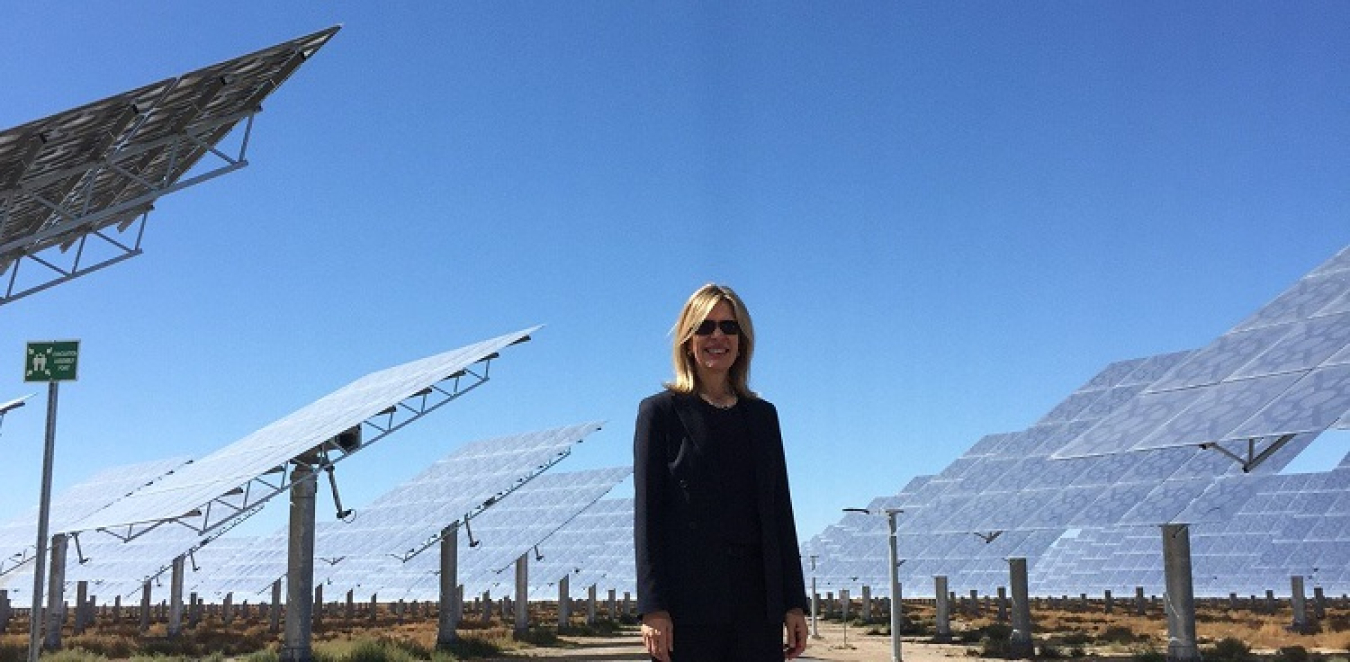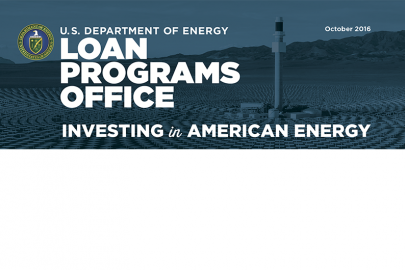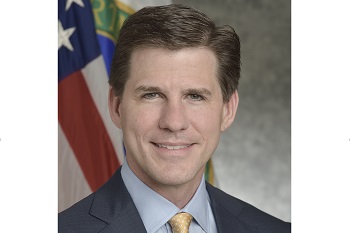Deputy Secretary Sherwood Randall announced a new LPO report “Powering New Markets: Energy Storage Poised for Growth" at Crescent Dunes
Office of Energy Dominance Financing
October 24, 2016
Deputy Secretary Elizabeth Sherwood-Randall stands amidst the heliostats at the Crescent Dunes concentrating solar power project.
Earlier this month I had the opportunity to join Deputy Secretary Sherwood-Randall for a unique celebration in the Nevada desert. The Crescent Dunes concentrating solar power (CSP) plant in Tonopah, Nevada played host to an event commemorating the plant’s deployment of a cutting-edge technology.
Crescent Dunes is the first CSP plant in the United States to use molten salt technology to generate electricity and store heat that can be later used for electrical generation. When ramp-up is complete, Crescent Dunes is expected to have 10 hours of storage, making it one of the first U.S. power plants to deploy “nighttime solar.”
Crescent Dunes is a great example of how the Department’s investments in innovative clean energy take groundbreaking ideas and make them a commercial reality. Dating back to the late 1970s, the Department funded the refinement and testing of the technology used at Crescent Dunes at pilot projects in the Mojave Desert. When SolarReserve sought to develop this technology at commercial scale for the first time, the Department’s Loan Programs Office (LPO) provided a $737 million loan guarantee to help finance the project.
Commercial lenders are often unwilling or unable to take on the risk of supporting the deployment of a new technology at large scale, like the Crescent Dunes project, until the technology has a solid history of commercial operation. The LPO Title XVII loan guarantee program exists to help bridge that gap in the market.
To explain the significance of LPO’s role in helping innovative technologies reach commercial scale, Deputy Secretary Sherwood Randall announced at the event a new report, “Powering New Markets: Energy Storage Poised for Growth.” The report details the technology combination of CSP with thermal energy storage and LPO’s role in helping to launch this new technology in the United States. Additionally, the report explains why energy storage technology deployment and the lessons learned from first-of-a-kind projects like Crescent Dunes are so important for U.S. global energy leadership.
Last week’s event was both a celebration of the success of the Crescent Dunes project and the promising future of energy storage technology in the United States. A number of other storage technologies are poised for commercial-scale deployment in addition to thermal energy storage and include batteries, flywheels, compressed air storage, and pumped hydro. The potential of energy storage technologies to provide solar on demand and improve grid integration for renewables could provide LPO an opportunity to help launch new markets like it did with the utility-scale photovoltaic (PV) solar market.
READ THE REPORT
-
 LPO financed 5 of the world’s largest concentrating solar power (CSP) projects, including the first 2 with thermal energy storage in the U.S.October 11, 2016
LPO financed 5 of the world’s largest concentrating solar power (CSP) projects, including the first 2 with thermal energy storage in the U.S.October 11, 2016


